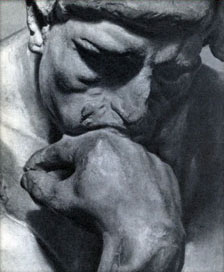Mathematical analysis also called standard analysis, the area of mathematics pertaining to the so-called real number system, i.e. the area that can be based on an axiom set whose intended interpretation (standard model) has the set of real numbers as its domain (universe of discourse). Thus analysis includes, among its many subbranches, elementary algebra, differential and integral calculus, differential equations, the calculus of variations, and measure theory. Analytic geometry involves the application of analysis to geometry. Analysis contains a large part of the mathematics used in mathematical physics. The real numbers, which are representable by the ending and unending decimals, are usefully construed as (or as corresponding to) distances measured, relative to an arbitrary unit length, positively to the right and negatively to the left of an arbitrarily fixed zero point along a geometrical straight line. In particular, the class of real numbers includes as increasingly comprehensive proper subclasses the natural numbers, the integers (positive, negative, and zero), the rational numbers (or fractions), and the algebraic numbers (such as the square root of two). Especially important is the presence in the class of real numbers of non-algebraic (or transcendental) irrational numbers such as pi. The set of real numbers includes arbitrarily small and arbitrarily large, finite quantities, while excluding infinitesimal and infinite quantities. Analysis, often conceived as the mathematics of continuous magnitude, contrasts with arithmetic (natural number theory), which is regarded as the mathematics of discrete magnitude. Analysis is often construed as involving not just the real numbers but also the imaginary (complex) numbers. Traditionally analysis is expressed in a second-order or higher-order language wherein its axiom set has categoricity; each of its models is isomorphic to (has the same structure as) the standard model. When analysis is carried out in a first-order language, as has been increasingly the case since the 1950s, categoricity is impossible and it has nonstandard models in addition to its standard model. A nonstandard model of analysis is an interpretation not isomorphic to the standard model but nevertheless satisfying the axiom set. Some of the nonstandard models involve objects reminiscent of the much-despised ‘infinitesimals’ that were essential to the Leibniz approach to calculus and that were subject to intense criticism by Berkeley and other philosophers and philosophically sensitive mathematicians. These non-standard models give rise to a new area of mathematics, non-standard analysis, within which the fallacious arguments used by Leibniz and other early analysts form the heuristic basis of new and entirely rigorous proofs.
See also CALCULUS , CATEGORICITY , PHILOS- OPHY OF MATHEMATIC. J.Cor.
